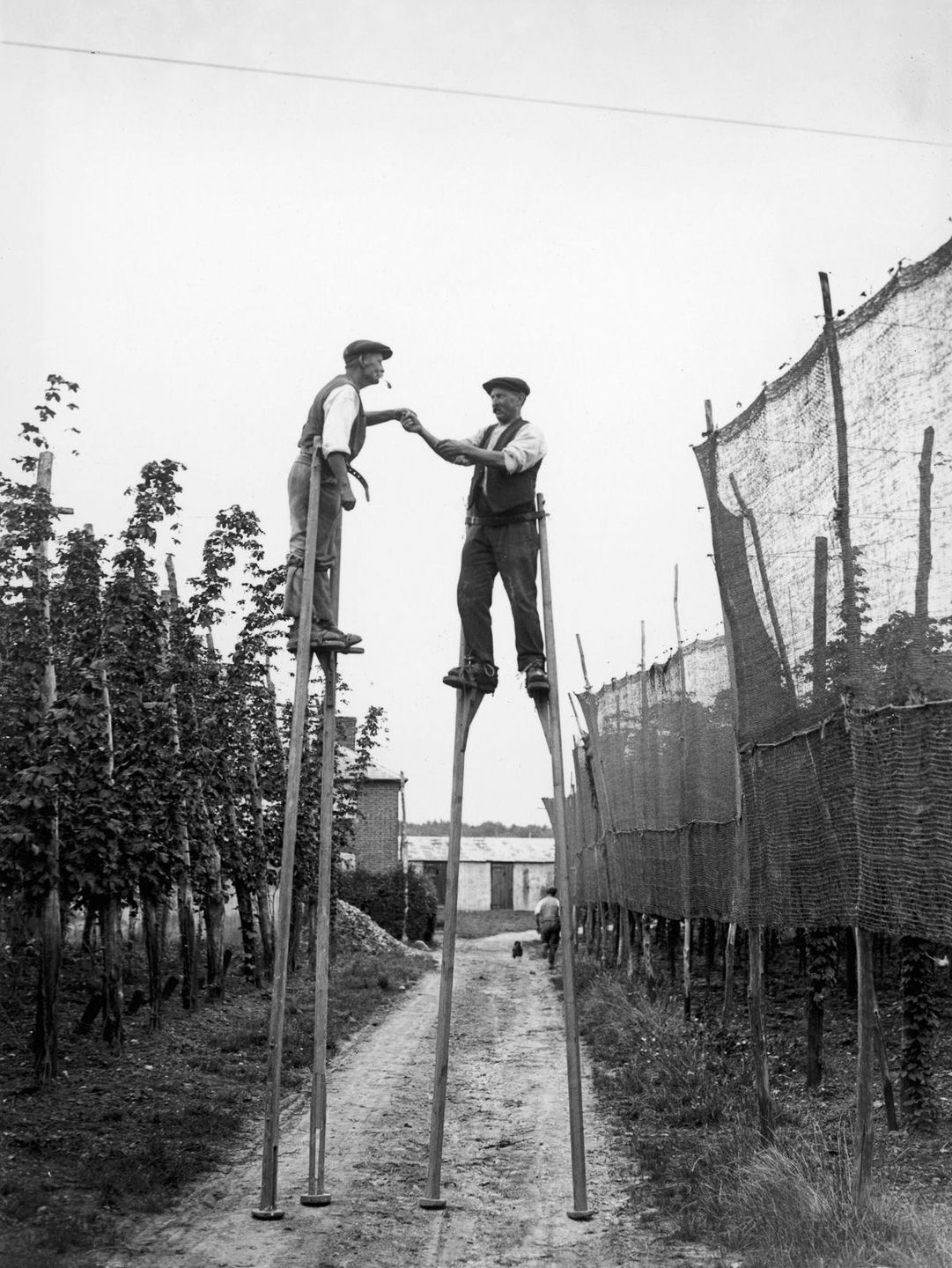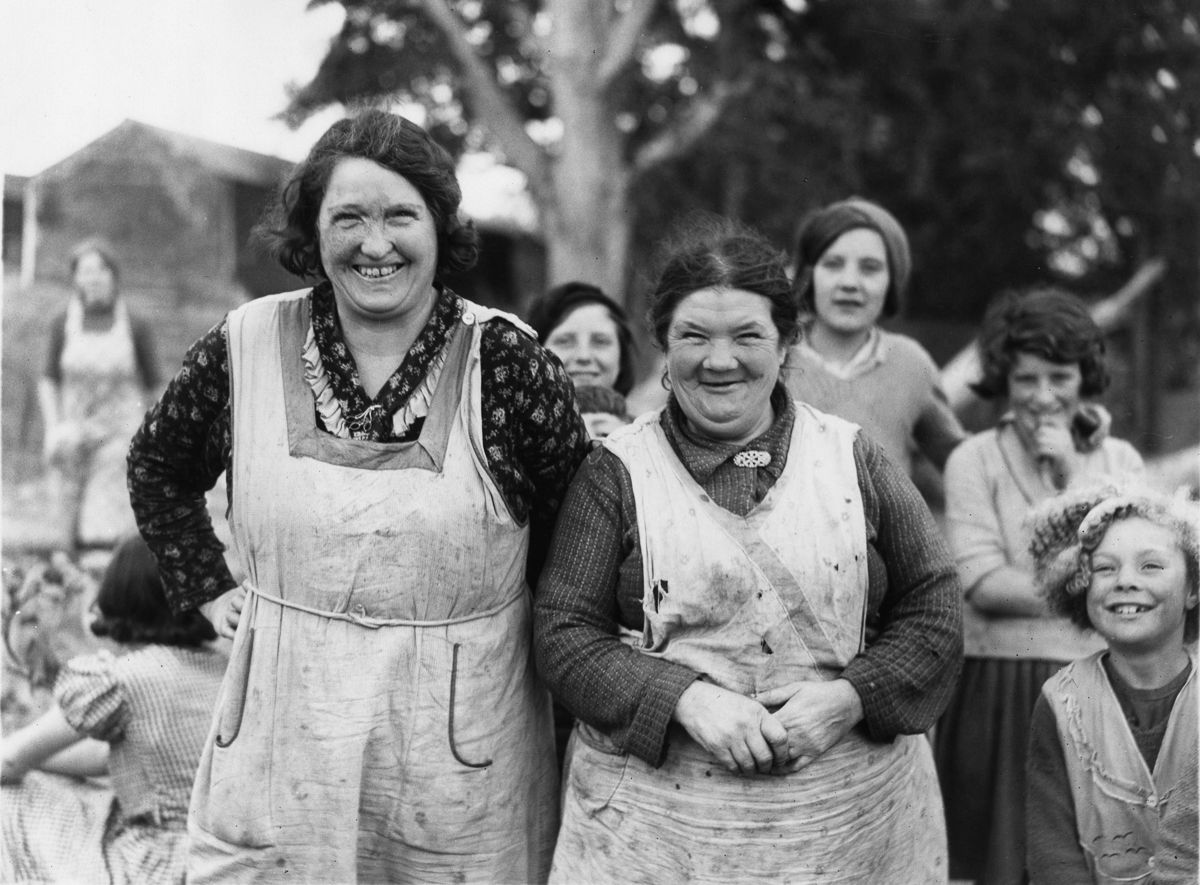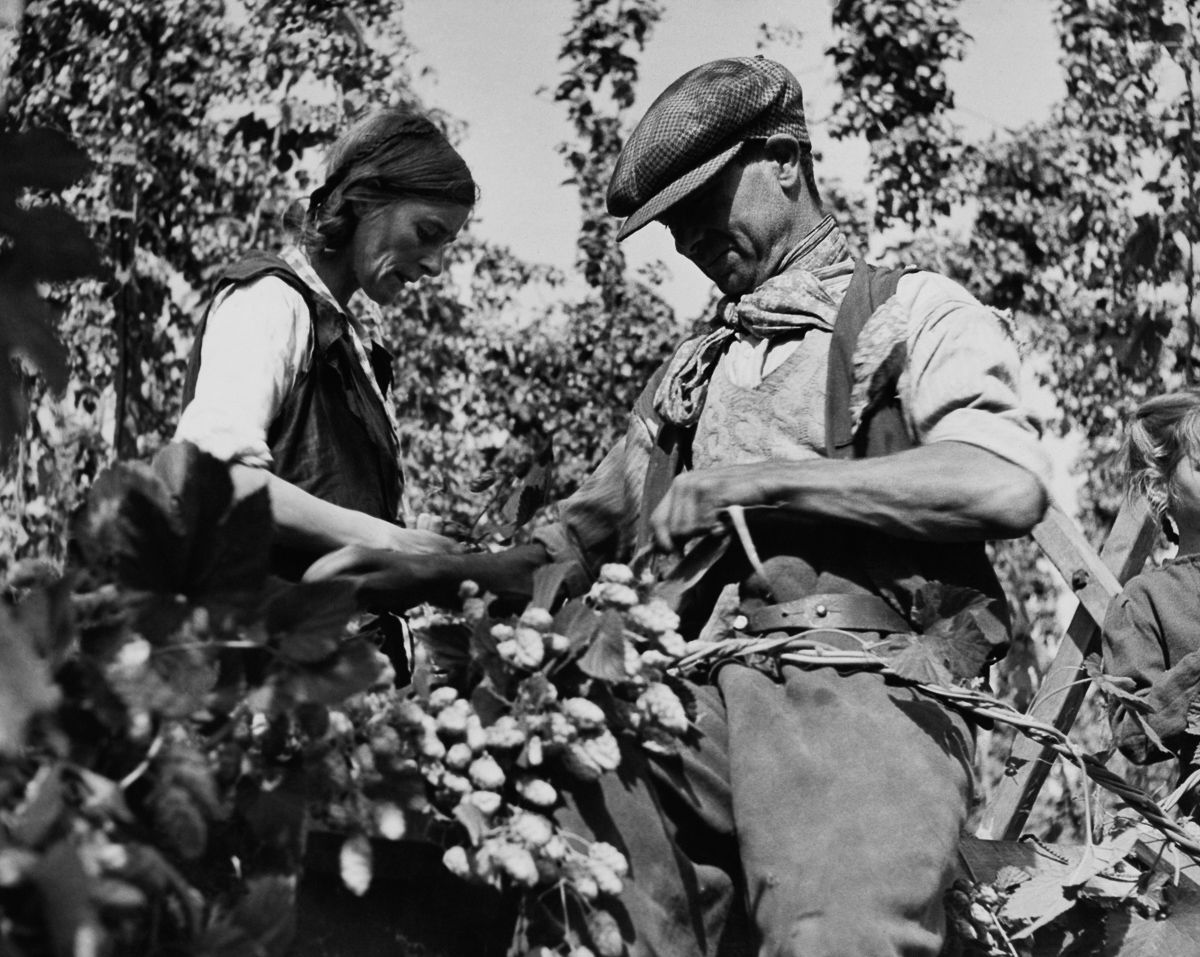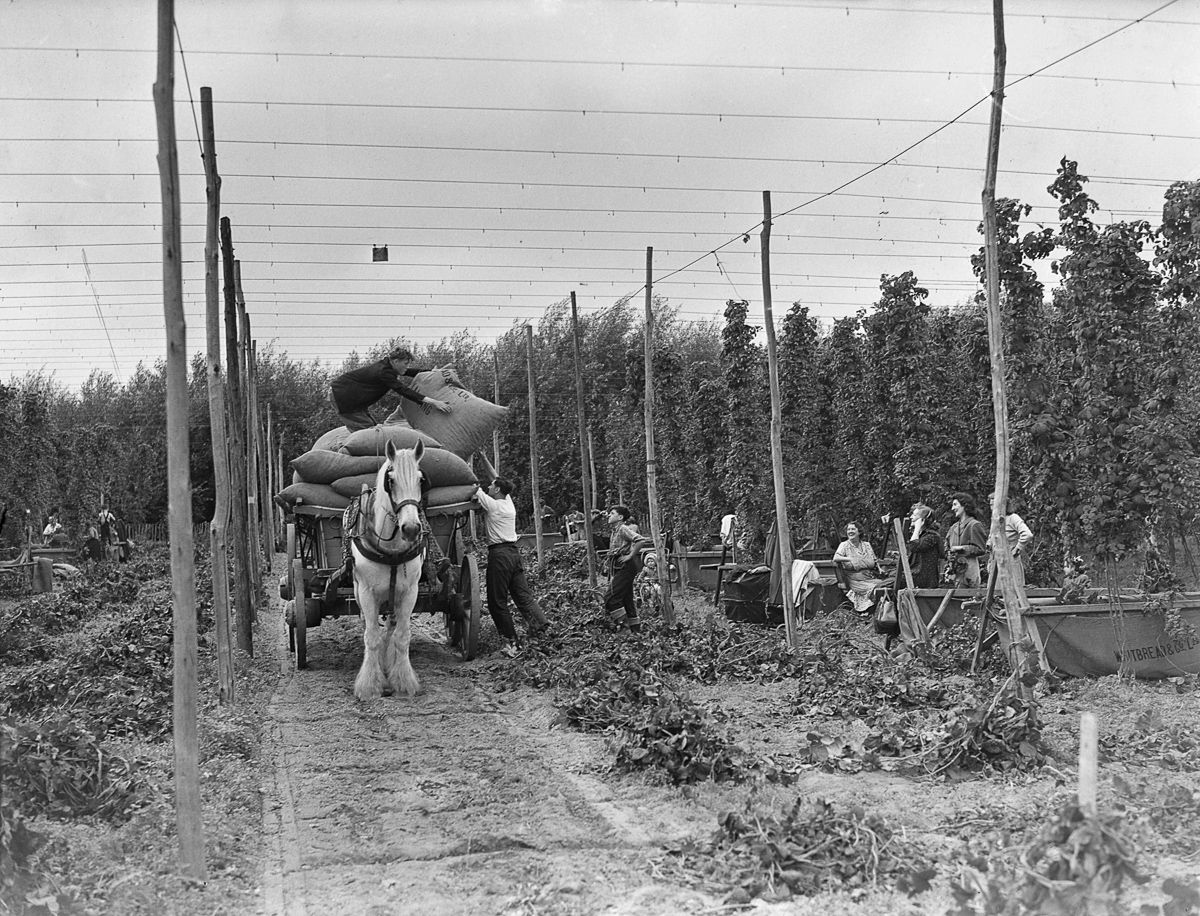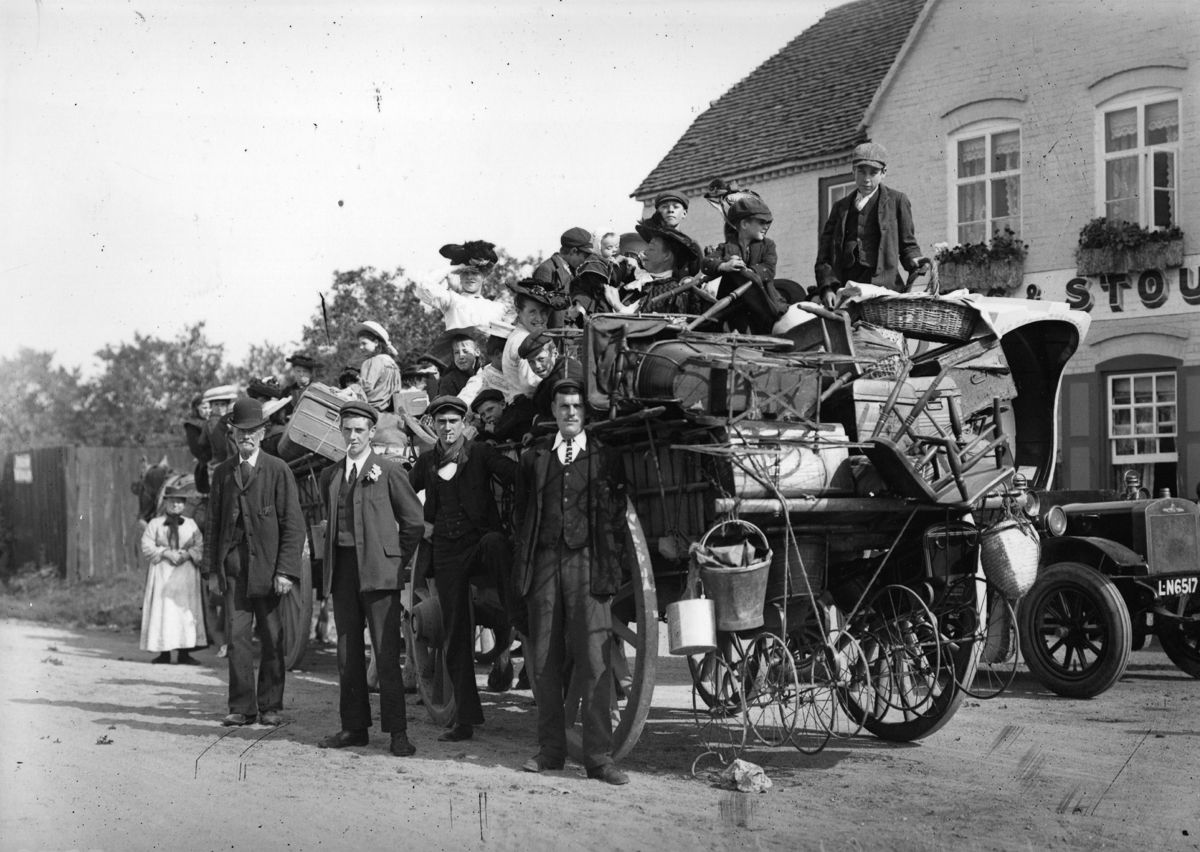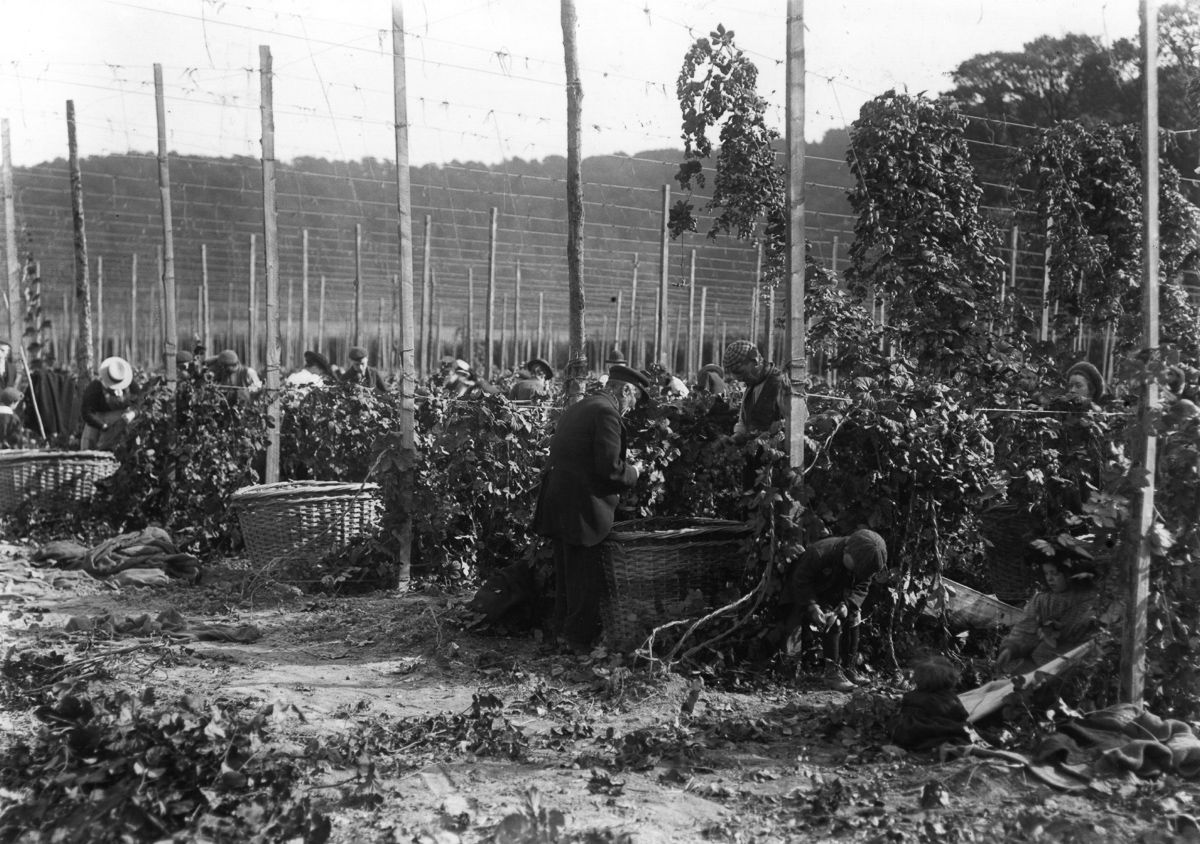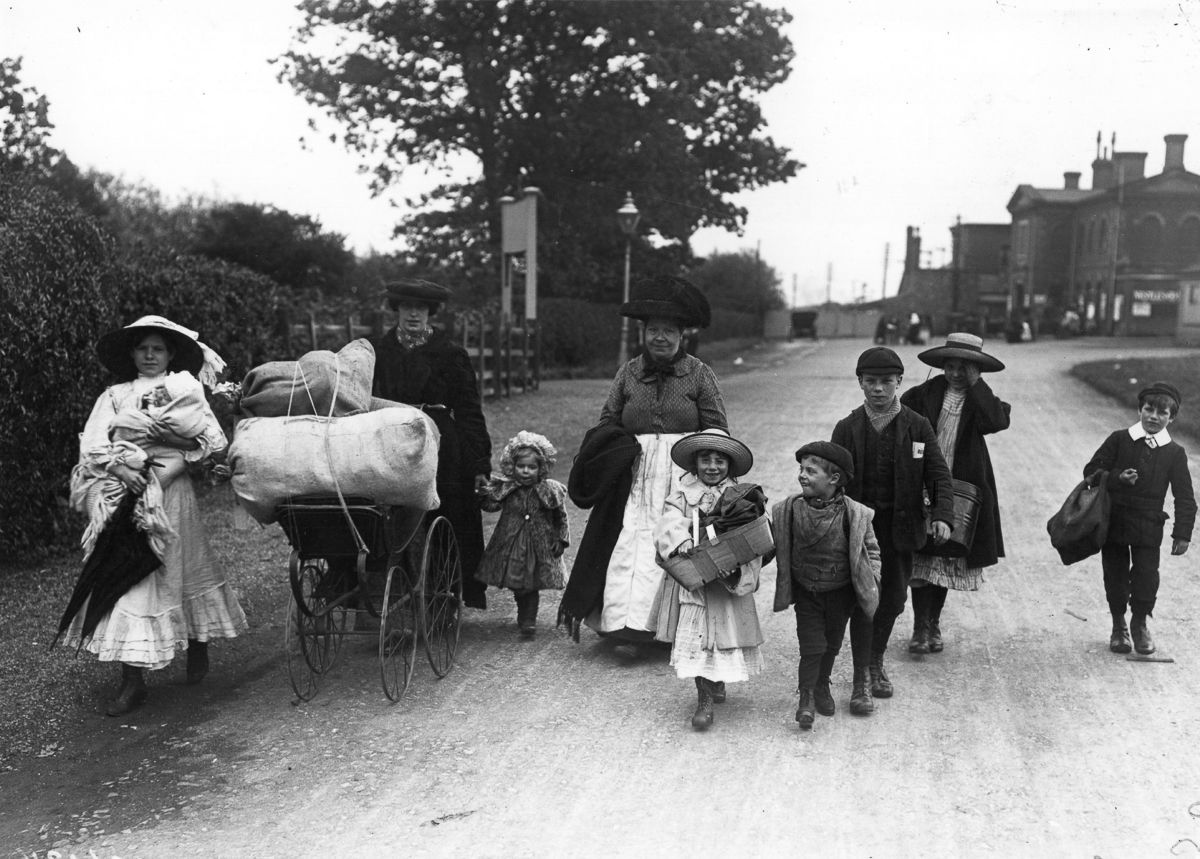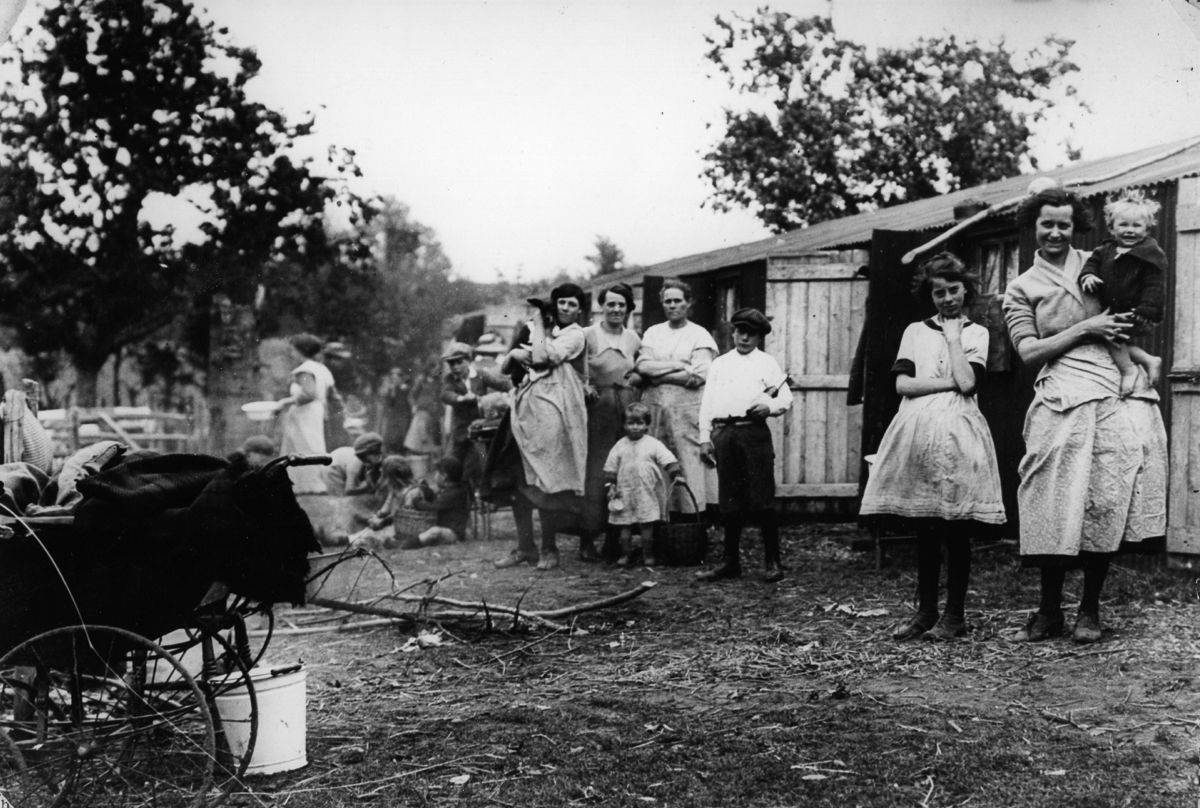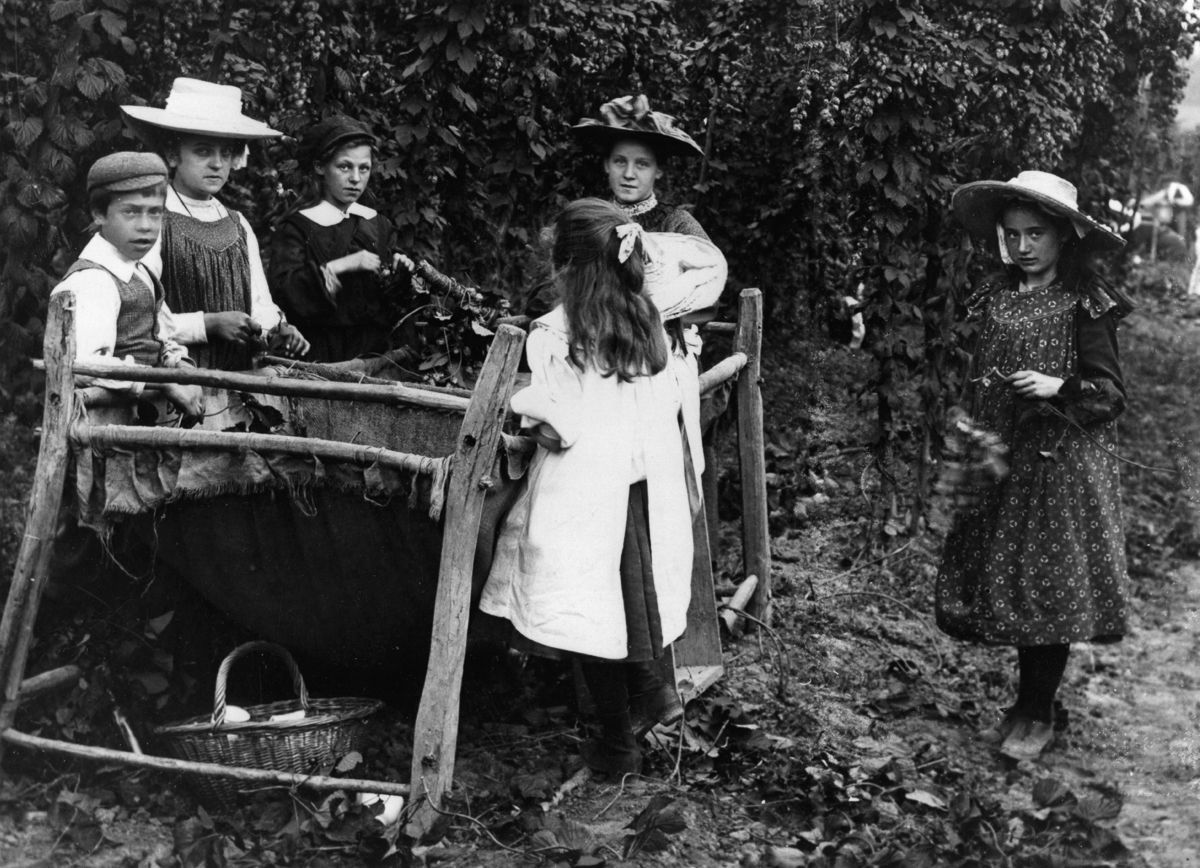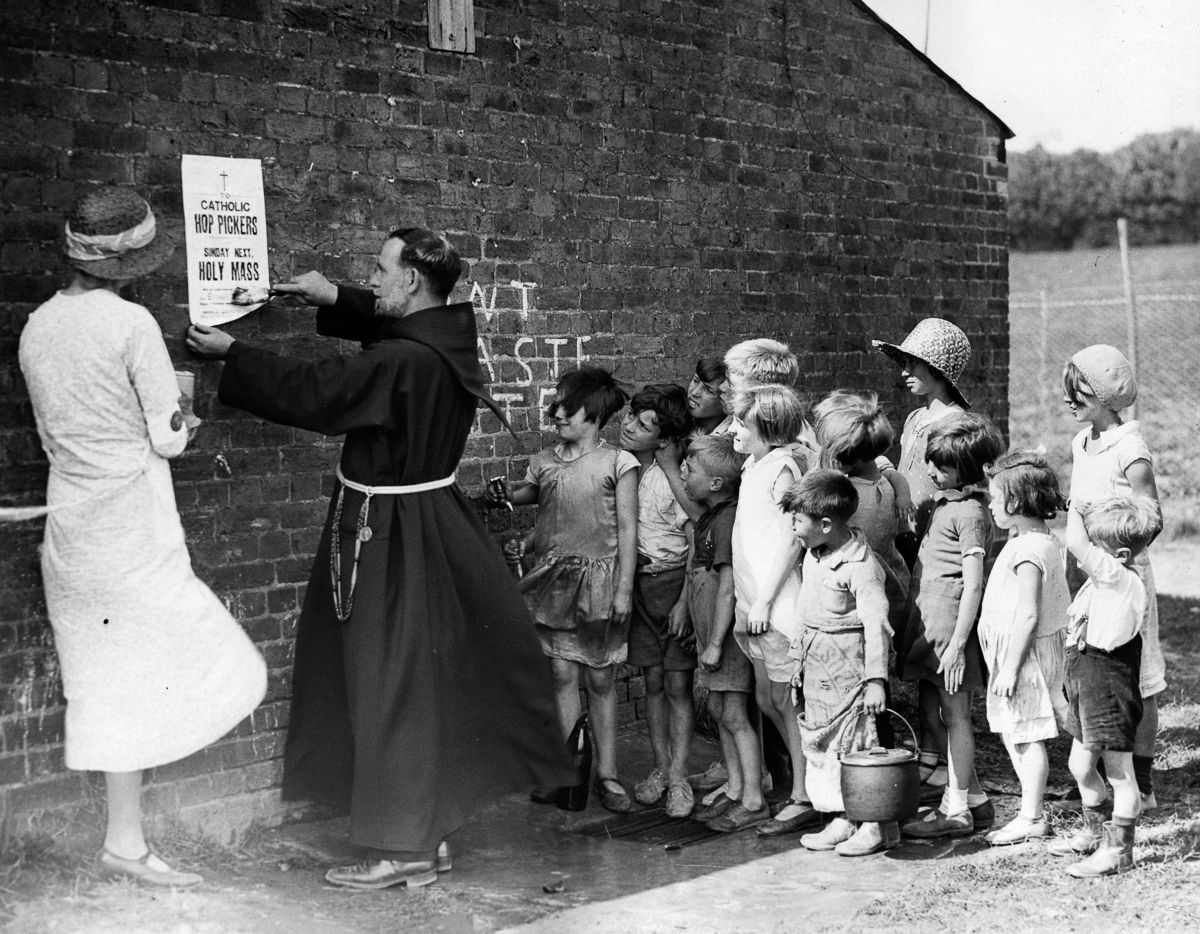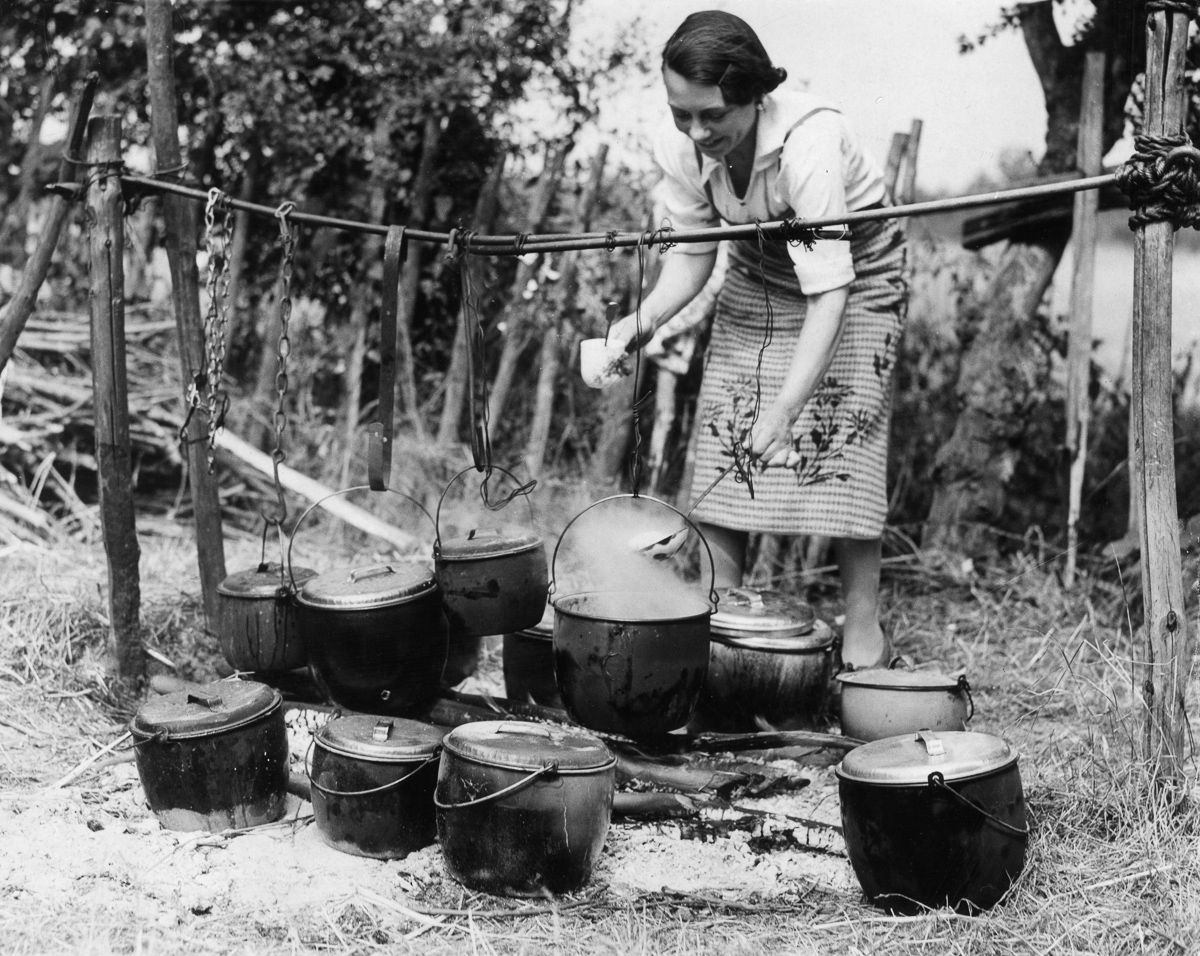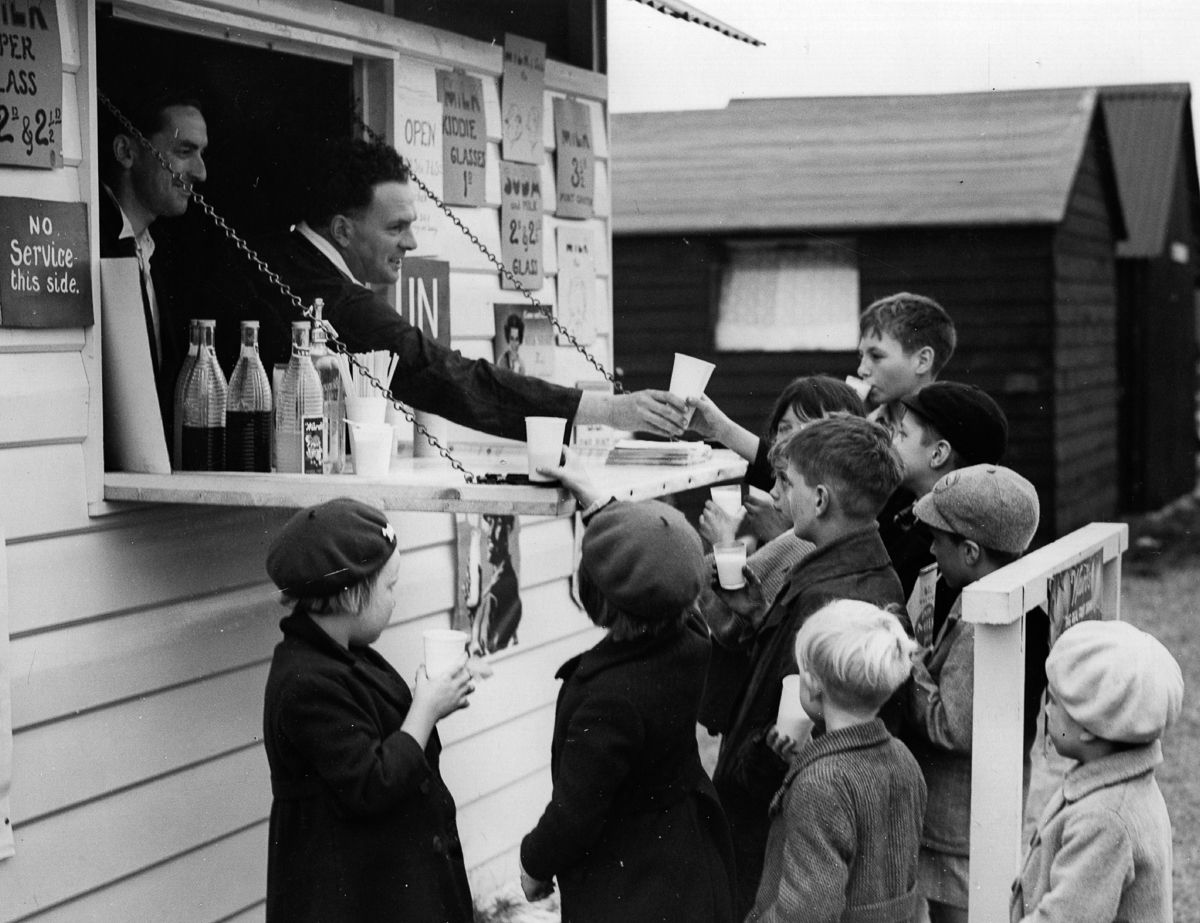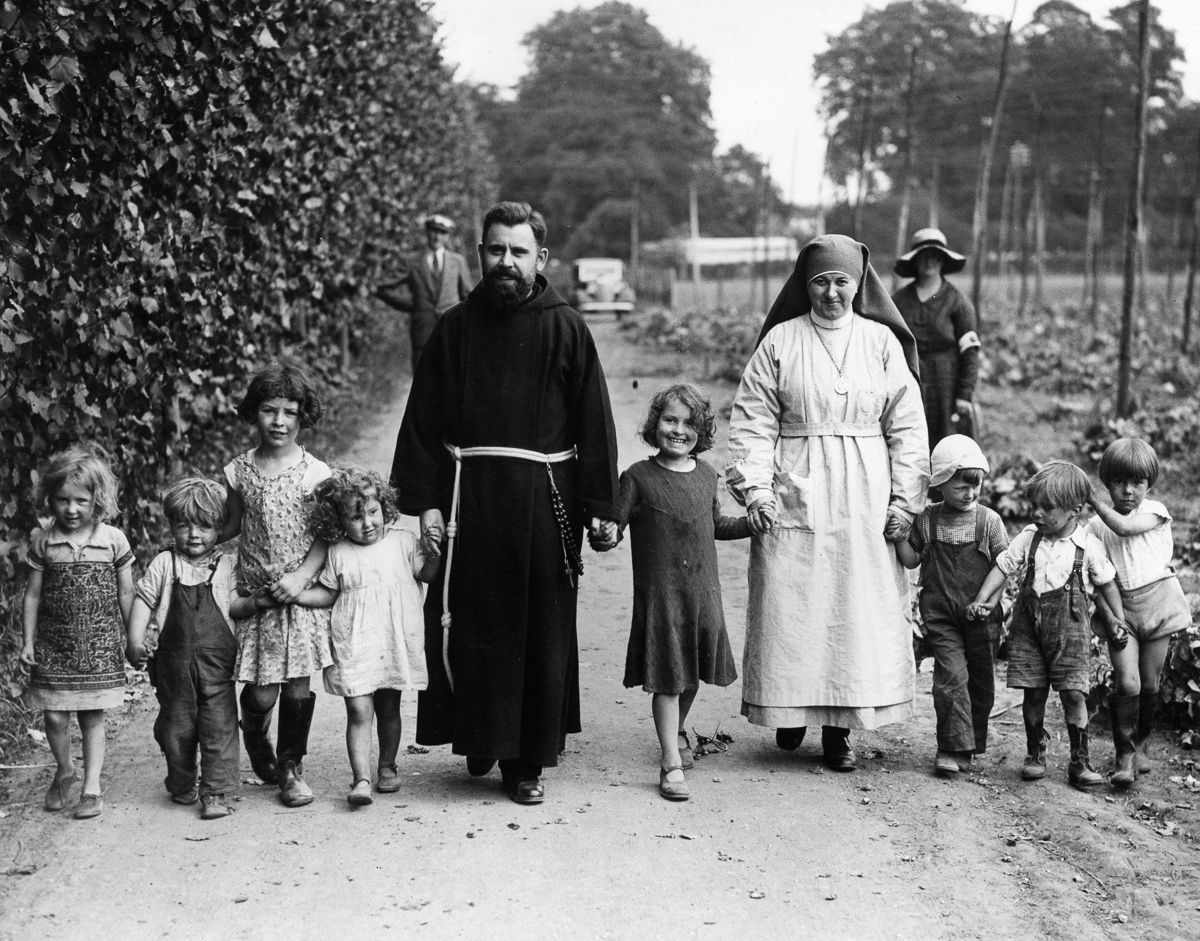“We are here to drink beer. We are here to kill war. We are here to laugh at the odds and live our lives so well that Death will tremble to take us”
– Charles Bukowski, Life Magazine, December 1988
The English county of Kent is synonymous with growing hops, a tall climbing perennial branded with the exquisite Latin name humulus lupulus (‘wolf of the woods’) used to make beer. The hop plant is “dioecious” – the female and male plants are separate; the female plant bears the hop. Farming the hop necessities supporting it with tall wooden poles (typically up to 5m), wire and string. In spring, the plants are trained up the string, reaching the summit in early July, when they begin to flower and develop cones.
The British Hop Association informs us:
The hop cones consist of layers of soft tissue petals where the lupulin glands form and they look like large yellow pollen grains. Each lupulin gland contains the oil resins which confer bitterness, preservative properties plus the aroma and flavour. It is the alpha acid in the lupulin that imparts the bitterness in the beer. A stiff oily substance, lupulin is sticky to touch and with a complex chemistry found nowhere else in the plant kingdom. It is made up of several volatile oils, which formulate the flavour used in beer.
These subtle differences are evident in the cones of different hop varieties, which individually contribute to the flavouring of the beer.
In September the cones are harvested – those strings are long so hop pickers often used to wear stilts. The hops are then dried in a Kiln or Oast house. From there the crop is sent to breweries.
Tradition has it that the first English hop garden was created near Canterbury in 1520, as Kent was the earliest centre for hop culture due to its suitable soil, established enclosed field system and good supply of wood for the poles and charcoal for drying. Furthermore, Kent farmers could afford the high initial capital outlay as they were among the most prosperous of the time.
One of the simplest and most economic methods of training hops was developed in Kent by Henry Butcher in about 1875. A great deal of manpower was always required in all hop-growing regions of England to pick the hops in September, as the value of the crop depended on it being picked quickly and at the right moment. Kentish records of the mid 17th century mention some ‘strangers who came a hopping’ indicating that there was not enough local labour. The majority of Kent’s manpower came from London and at the industry’s peak, more than 80,000 people poured into Kent every autumn…
Between the wars, East Londoners regarded the picking season as a holiday with pay as they got to exchange their cramped town life for a month’s rural freedom and whole families were known to visit the same Kent hop yards for several generations.
Would you like to support Flashbak?
Please consider making a donation to our site. We don't want to rely on ads to bring you the best of visual culture. You can also support us by signing up to our Mailing List. And you can also follow us on Facebook, Instagram and Twitter. For great art and culture delivered to your door, visit our shop.
